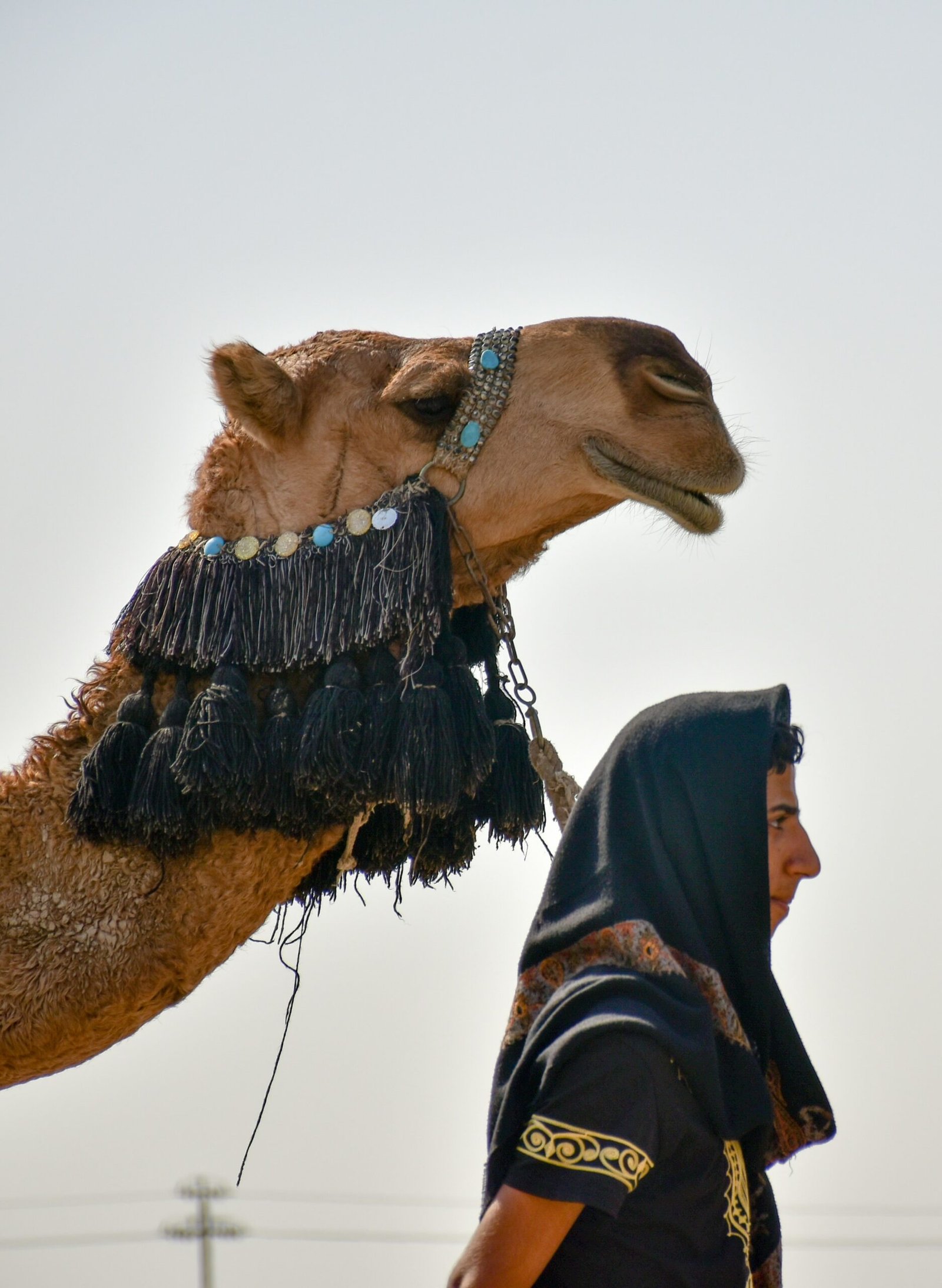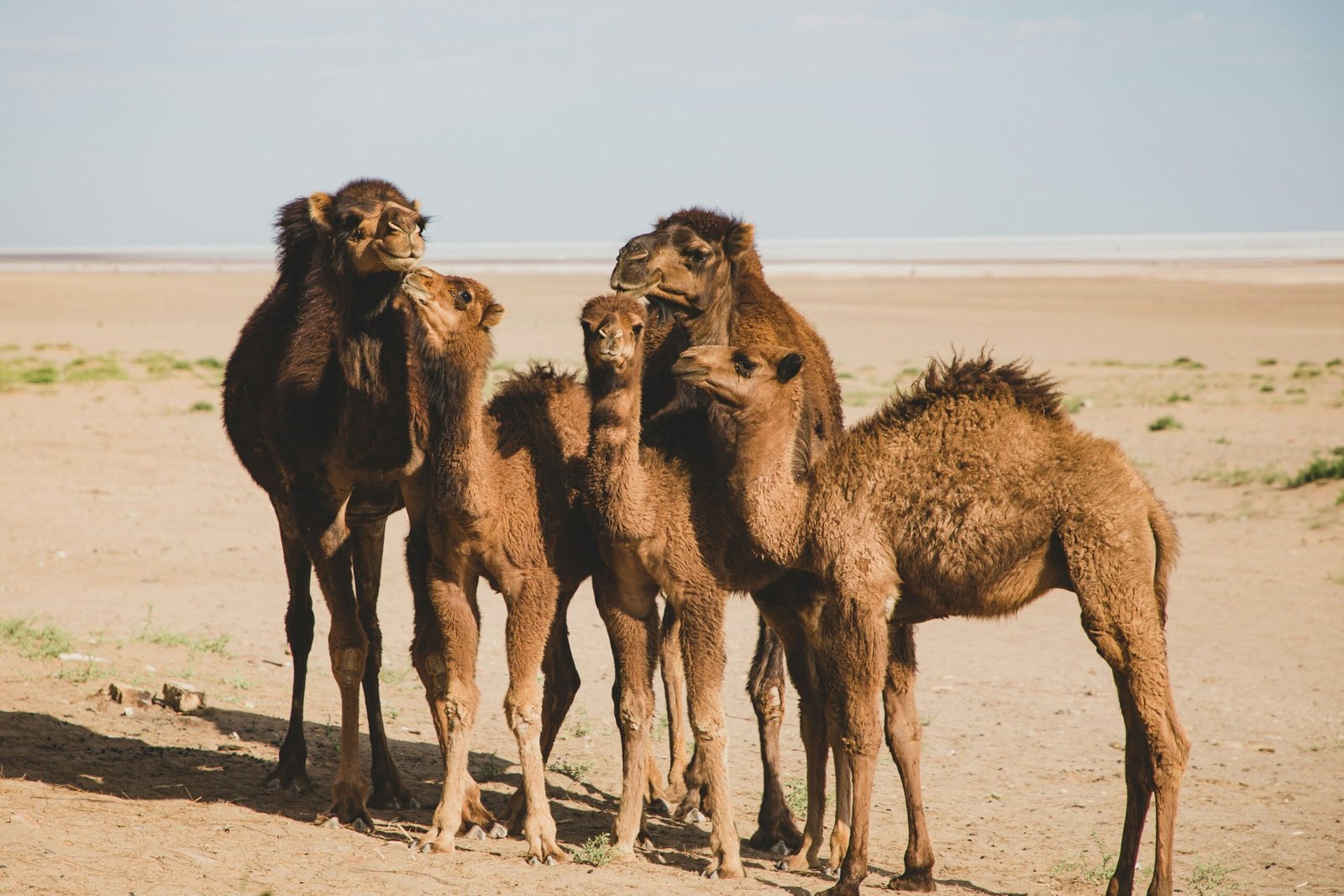Camels, with their remarkable ability to survive in harsh desert environments, possess a unique and fascinating feature – long eyelashes. These eyelashes serve a crucial purpose for camels, enabling them to adapt and thrive in their natural habitat. In this article, we will delve into the reasons behind the camels’ long eyelashes and explore how they benefit these magnificent creatures.
Protection against sand and dust
Living in desert regions exposes camels to frequent sandstorms and dusty conditions. The long eyelashes of camels act as a protective barrier, shielding their eyes from the harsh elements. These eyelashes are not only long but also thick and curved, providing a formidable defense against sand and dust particles. By creating a natural shield, the eyelashes prevent the irritating debris from entering the camels’ eyes. Moreover, the curvature of the eyelashes effectively redirects airflow, reducing the chances of any foreign matter finding its way into their eyes.
To further understand the significance of this adaptation, consider the following:
- The desert’s sandy winds can reach high speeds, causing potentially damaging abrasive effects on the eyes. The long eyelashes act as a physical barrier, intercepting and deflecting the incoming sand particles.
- Dust particles can carry harmful microorganisms or irritants. By blocking their entry into the eyes, the eyelashes help minimize the risk of infections or discomfort.
Prevention of excessive sunlight
Another essential function of camels’ long eyelashes is to shield their eyes from the intense desert sunlight. The desert sun can be extremely bright and harmful to the eyes, leading to discomfort and potential damage. By having long eyelashes, camels can partially block the direct rays of the sun, reducing eye strain and the risk of sunburn. The eyelashes create a natural shade, helping to protect the delicate eye tissues from the damaging effects of UV radiation.
Let’s explore the benefits of this sun protection in more detail:
- Excessive exposure to the sun can cause a condition called photokeratitis, also known as “snow blindness.” This painful inflammation of the cornea can temporarily impair vision. The long eyelashes help reduce the intensity of sunlight reaching the eyes, minimizing the risk of such conditions.
- The presence of melanin in the eyelashes provides an additional layer of protection against harmful UV radiation. This pigment absorbs and dissipates the potentially damaging rays, safeguarding the sensitive eye tissues.
Retention of moisture
Surviving in arid desert environments, where water scarcity is a constant challenge, requires remarkable adaptations. One of the surprising benefits of camels’ long eyelashes is their ability to help retain moisture. The length and thickness of the eyelashes play a significant role in reducing the evaporation of moisture from the eyes. This is especially important as camels have evolved to conserve water in their bodies, and preventing excessive moisture loss from the eyes contributes to their overall hydration.
Consider the following points to better understand the importance of moisture retention:
- The eyes, like any other organ, require moisture to function optimally. By reducing evaporation, the long eyelashes help maintain a suitable level of hydration, ensuring the eyes remain lubricated.
- In extreme desert conditions, where water sources are scarce, every drop matters. By minimizing moisture loss from the eyes, camels can conserve water for other essential biological functions.
Enhanced vision
In addition to their protective functions, the long eyelashes of camels also play a role in improving their vision. The length and positioning of the eyelashes allow camels to filter out excessive sunlight, glare, and dust, which could otherwise impair their vision. By keeping their eyes clear and free from obstructions, camels can navigate their desert surroundings more effectively, spotting potential threats and sources of food and water.
To gain a deeper understanding of how enhanced vision contributes to their survival, consider the following:
- Excessive sunlight can cause temporary blindness or impair vision. By acting as natural sunglasses, the long eyelashes enable camels to see clearly even in bright desert conditions.
- Dust particles can create a hazy environment that obscures vision. The long eyelashes help filter out these particles, allowing camels to maintain a clear line of sight.
Adaptation to the desert lifestyle
Camels have adapted to the desert lifestyle over millions of years, and their long eyelashes are a remarkable example of this adaptation. These unique features enable camels to survive and thrive in extreme conditions where other animals would struggle. The evolution of long eyelashes in camels is an incredible natural solution that helps them overcome the challenges posed by their arid environment.
To appreciate the extent of this adaptation, consider the following:
- The desert is characterized by its harshness, with extreme temperatures, scarcity of water, and abrasive winds. The long eyelashes of camels provide a specialized defense mechanism that allows them to flourish in such an environment.
- Over time, natural selection favored camels with longer eyelashes, as this adaptation conferred a survival advantage. Camels with shorter or inadequate eyelashes would have been more prone to eye injuries, dehydration, and compromised vision, making it harder for them to survive and reproduce.
Conclusion
Camels’ long eyelashes serve multiple essential purposes in their survival in desert environments. From protecting their eyes against sand and dust to providing shade from the intense sunlight, these adaptations are crucial for their well-being. Additionally, the ability of camels’ long eyelashes to retain moisture and enhance vision contributes to their resilience in arid conditions. Understanding and appreciating these remarkable adaptations helps us recognize the incredible ways in which animals adapt to their environments for their survival and success.
FAQ
1. Why do camels have long eyelashes?
Camels have long eyelashes to protect their eyes from sand, dust, and other debris in their desert environment.
2. How do camels’ long eyelashes protect against sand and dust?
Camels’ long and curved eyelashes act as a natural shield, intercepting and deflecting sand and dust particles. They also redirect airflow, reducing the chances of foreign matter entering their eyes.
3. What is the purpose of camels’ long eyelashes in preventing excessive sunlight?
Camels’ long eyelashes partially block the intense desert sunlight, reducing eye strain and the risk of sunburn. They create a natural shade and help protect the delicate eye tissues from the damaging effects of UV radiation.
4. How do camels’ long eyelashes contribute to moisture retention?
Camels’ long eyelashes help reduce the evaporation of moisture from their eyes, ensuring optimal hydration and lubrication. This is especially important in arid desert environments where water scarcity is a constant challenge.











